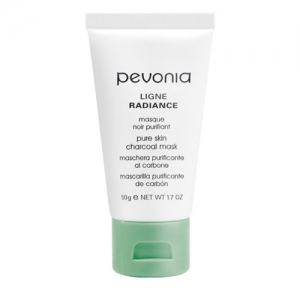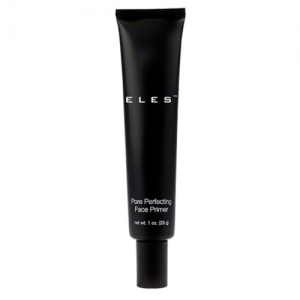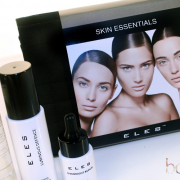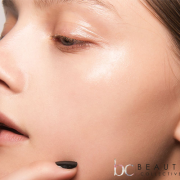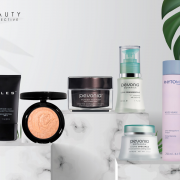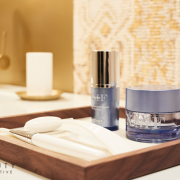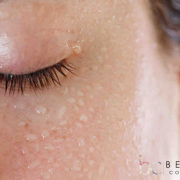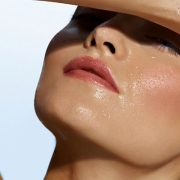5 signs you have combination skin and how to manage it
While many of us tend to self-diagnose our skin with one specific condition, be it dry, oily, sensitive, ageing, the list goes on, it might actually surprise you that the most common skin type is actually combination skin – a mix of both oily and dry!
So, if you’ve noticed that you have dry areas on your face but experience excess oil at the same time, you could well be one of the millions, billions even, with combination skin. The problem is it can be tricky to figure out how to care for your skin properly considering that different parts of your face have different needs! The good news is however that you can indeed perfectly balance your combination skin by following a few tips and tricks!
Read on a we explain the tell-tale signs of combination skin, what exactly causes it and how best to care for it.
-
Your t-zone is oily, while your cheeks are dry
Combination skin tends to display certain characteristics – excess oil, large pores, shine, and blackheads on the forehead, nose and chin (otherwise known as the T’zone) this is due to over-active oil glands in these areas, and then dryness, dullness, fine line and wrinkles elsewhere (predominantly on your cheeks). As a result, it’s very important for those of us with combination skin to regulate sebum and oil production along the T-zone so be sure to steer clear of greasy, creamy products as they will be too rich for your skin and may lead to clogged pores, at the same time though you don’t want to use products that can dry out your skin in turn activating even more oil production! The goal is to treat both oily and dry areas at the same time for a clear, balanced complexion!
Solution:
Multi-mask your skin once a week! Apply a moisturising mask to your dry areas and an oil-absorbing charcoal or clay mask to your oily T-zone. It’ll do wonders for combination skin.
It’s tricky to soak up excess oil without over-drying the skin but products containing charcoal and clay do just that! They work by attracting and absorbing dirt and oil. As a lightweight natural ash residue hydrocarbon, charcoal easily pulls toxins out of the skin for a clean, purified, and healthy complexion as it restores a normalized cellular function. Try Pevonia’s Pure Skin Charcoal Mask. Apply once a week to oily areas of your skin and watch it work its magic.
-
You get breakouts in the oily area of your face
Thanks to excess oil production in the t-zone, combination skin can often lead to breakouts when the pores get clogged.
Solution:
To fight these breakouts, we suggest using a salicylic acid-based cleanser like Medicalia Clarifying Cleanser which provides pore-clearing benefits in a super gentle lather that won’t dry out the skin, stripping it of moisture.
We also love Phytomer’s’ Oligopur Blemish Target Gel, it’s a phenomenal spot treatment which targets blemishes with precision, rapidly improving the skin’s appearance and eliminating spots almost overnight!
-
Your oily-to-dry skin ratio tends to change dependant on the season
With combination skin, your oily-to-dry ratio tends to vary with a change in seasons. During summer the heat and humidity cause oil production to increase, causing your T-zone to feel extra oily while your dry areas are actually quite “normal”. During winter, the opposite happens this is because environmental exposure sucks moisture from your skin which means your T-zone will appear “normal” while your dry areas will look really dry.
Solution:
Use Pevonia Balancing Combination Skin Cream, it’ll keep your skin perfectly balanced all year round no matter what the weather. With a subtle lemongrass scent to die for and a soothing, silky texture which perfectly dissolves into skin on application, this moisturiser is a BC best-seller for very good reason! Perfect for those with combination skin, prone to oily t-zones, it effectively refines pores and controls oil and shine with skin nourishing ingredients including vitamin e, arnica and aloe. Get ready for smooth, soft and supple skin minus the excessive oil and congestion that it brings! Yes!
- You have enlarged pores on your nose, chin and forehead
Unfortunately the more oily your skin (thank you overactive oil glands in our forehead, nose and chin area!) the more prone this area is to clogged pores. When sebum builds inside pores, they expand giving them an enlarged appearance!
Solution: You can reduce the appearance of these pores by following a number of tips.
-
Your makeup always looks patchy!
That’s right, your makeup looked flawless when you left the house but come midday it’s slid straight off your t-zone and clung to those cheese of yours looking like a patchwork piece!
Solution: Apply a hydrating and mattifying makeup primer before your foundation.
A good skin primer will become your lifeline. Not only will it stop your foundation from sliding off your face quite literally, it’ll keep your base smooth while reducing the appearance of pores (and fine lines!) too!
Our go-to is the ELES Pore Perfecting Face Primer. It’s oil-free, perfectly lightweight and seems to combat shiny areas on your skin almost instantly! This is because it contains a natural dermat complex which enables it to absorb oil and effectively reduce pores size in one hit! Outstanding for those of us with oily T-Zones!
The good news is it’s also formulated with nourishing ingredients to keep the dryer parts of your skin happy too!
So now you know you definitely have combination skin, what exactly causes it you might wonder…Like with all skin types, genetics play a major role so you can thank your parents for the skin you’ve landed! It’s not all their fault though! Environmental factors as well as your lifestyle choices play a large part too. For instance, prolonged humid conditions in the summer months cause sweat glands to produce more sweat leaving the skin moist and shiny, whereas prolonged heat causes skin to dehydrate resulting in dryness! And then let’s not forget those darn hormones of ours that can play havoc on our skin during certain times of the month! Skin issues can be exacerbated by our hormones. Your sebaceous glands (sebum) have receptors on them which respond to our hormones. The more testosterone produced, the more oil is produced in the skin!


